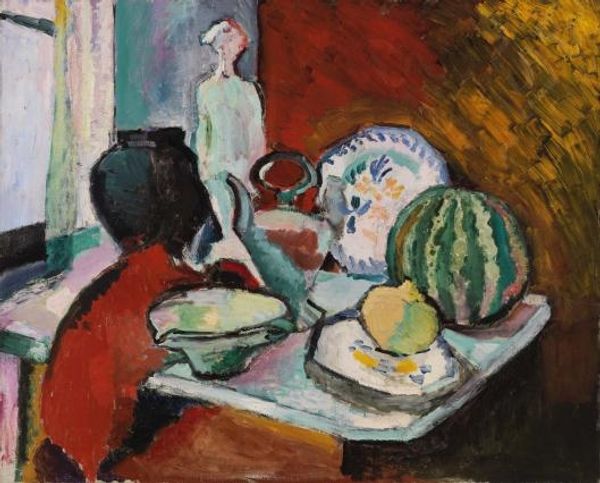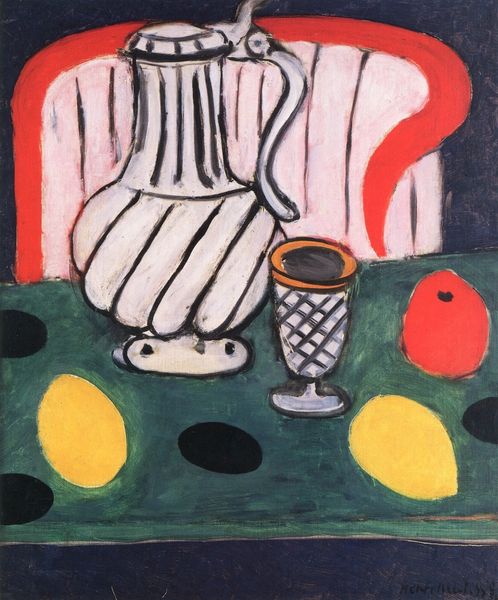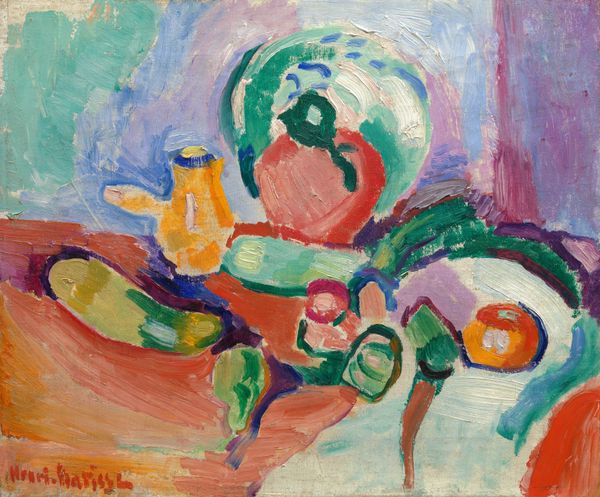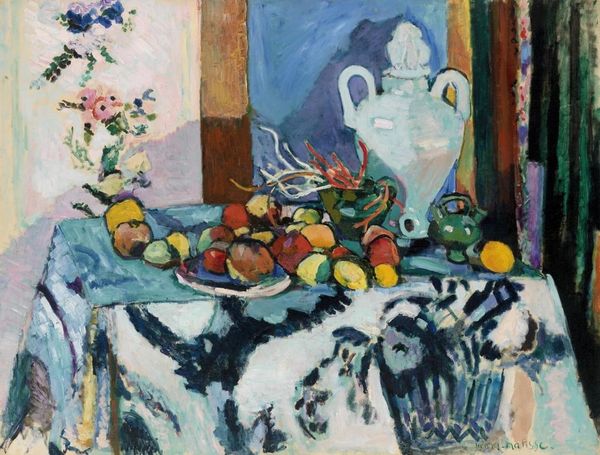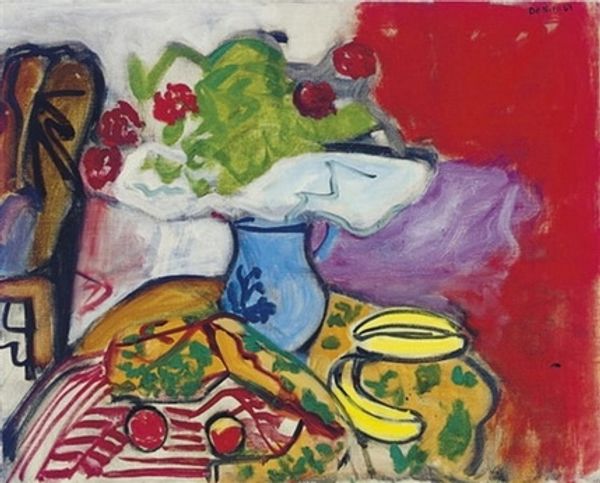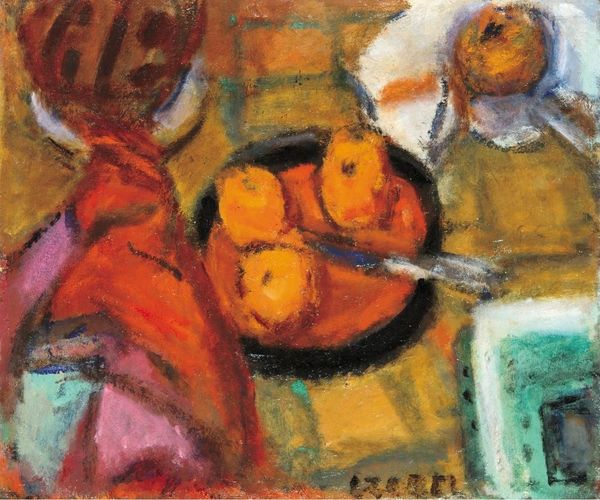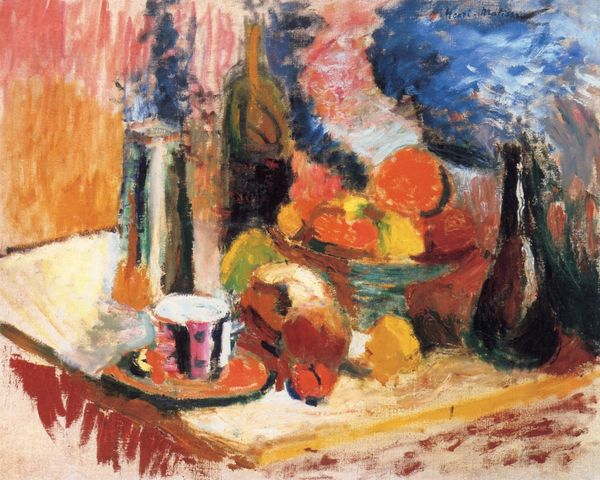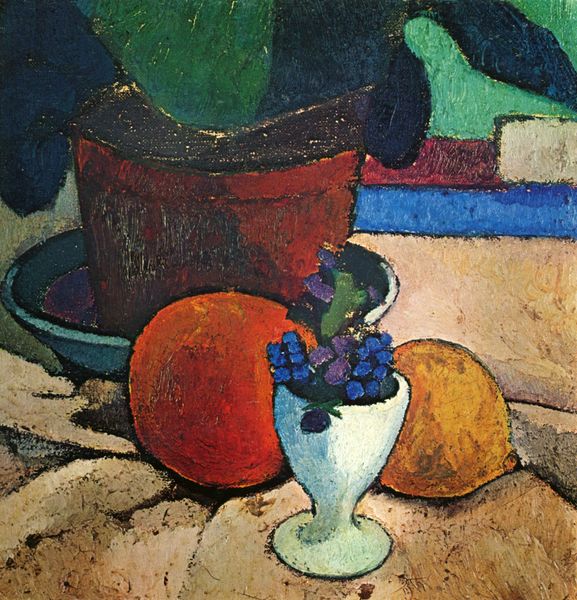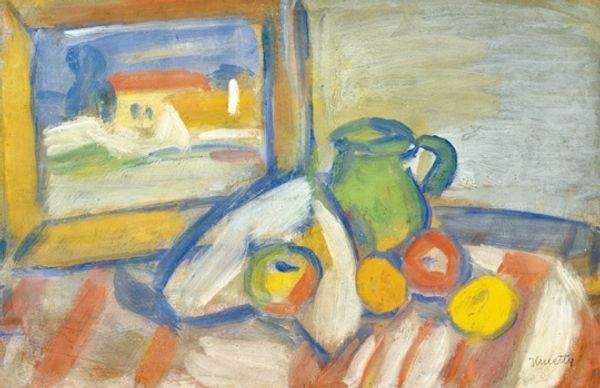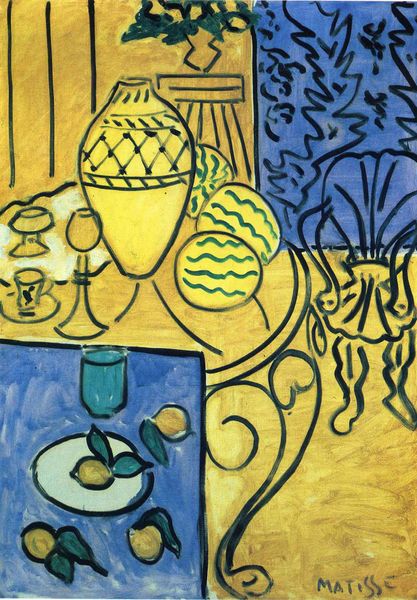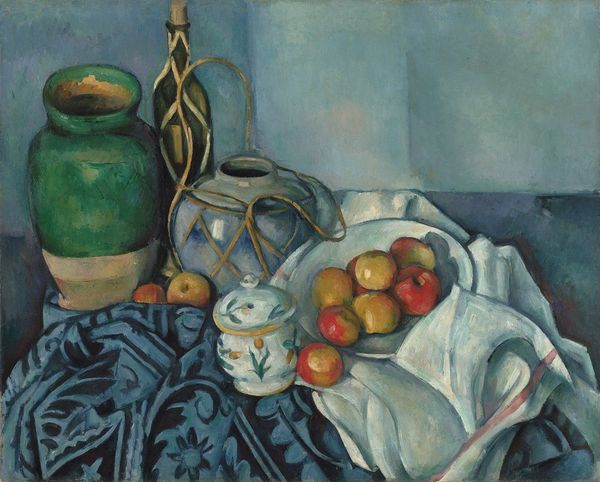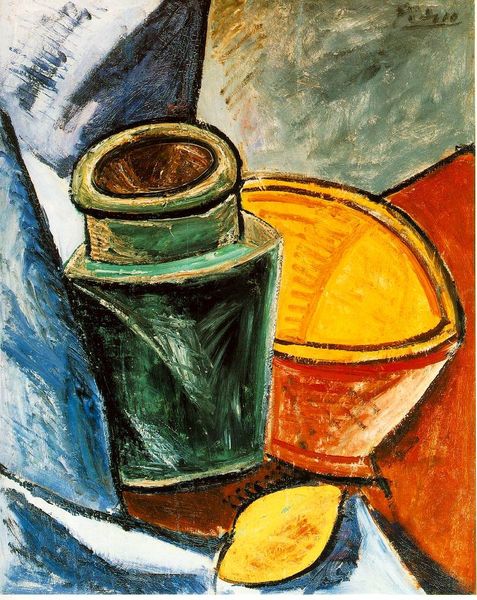
Copyright: Public domain
Curator: Jawlensky’s “Still-life with jug,” created circa 1913. Jawlensky was an instrumental figure in early 20th-century Expressionism. This oil on board piece demonstrates his shift towards abstraction through the influence of Fauvism and other modernist movements. Editor: My initial reaction is… vibrancy. The intense blues against the warmer oranges and reds—it's a bold chromatic symphony. Curator: Exactly! Jawlensky used these colors as emotional signifiers. The vividness of the fauvist style really allowed artists to depict objects not as they appeared, but as they felt. Editor: The composition is dynamic as well. See how he simplifies the forms into geometric shapes, nearly flattening the picture plane? There’s very little illusion of depth here, it all presses forward. Curator: Well, abstraction at that period represented liberation. European society was undergoing rapid changes: World War I was looming. Art was beginning to question its role, asking whether mere representation was enough when the world itself was transforming so radically. The themes in this still life reflected societal upheaval, an end to conventional imagery in the early 20th century. Editor: Agreed, this isn't about mimetic accuracy; it’s about conveying a sensation. Note how he uses pure, unmodulated color. The shapes of the fruits, the jug—they almost don't matter beyond their function as carriers of hue. Curator: Right. Think of the avant-garde circles Jawlensky was involved with. He was interested in spiritual expression and these color choices could convey themes and motifs about this. He wanted viewers to see beyond mere aesthetics to understand underlying feelings. Editor: I would even add that he successfully married those aspirations together into a balanced design. I can definitely feel that emotionality coming across! Curator: A fascinating glimpse into the turbulent pre-war years through the radical stylistic choices of one man's work. Editor: Absolutely, a prime example of how subjective feeling reshaped artistic form and purpose.
Comments
No comments
Be the first to comment and join the conversation on the ultimate creative platform.
